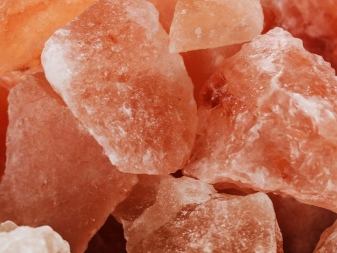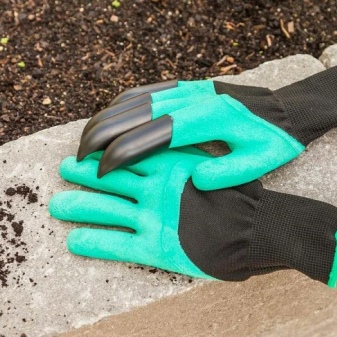How and with what to fertilize the lawn?

One of the modern trends in the landscape is the obligatory arrangement of the lawn in the adjoining territories. But in order to maintain an attractive appearance of the grass, the lawn needs to be fertilized regularly, saturating the soil and green mass with nutrients. Only in this case it is possible to preserve the attractiveness and freshness of the lawn area, which will delight its owners for a long time, delivering not only aesthetic pleasure, but also saving them from the exhausting work of clearing the area from weeds.


Timing and frequency of feeding
Timely top dressing is very important for lawn grass primarily because after each mowing it loses previously accumulated nutrients. After mowing, be sure to feed the lawn. In this case, one should adhere to the established norms for the frequency and proportions of fertilization. Too often it is not recommended to carry out the procedure, as this will lead to a disease of the green mass. We must proceed from the variety of sown grass, its need for feeding, the state of the soil, the surrounding natural conditions. Of course, the season also influences.
It is best to fertilize before the rain - this way the nutrients are better absorbed into the ground, and from there the roots will quickly pull them out. We must learn to read by the type of plants, what element they need. So, if the appearance of the lawn is faded or there are bald spots on it, then the plant needs nitrogen. And when the grass is very sluggish, but brittle, it means that it lacks phosphates. You need to fertilize the lawn in the spring with nitrogen, phosphorus and potassium - these elements will help the plants recover after the winter cold. That is why the first feeding in the new season is done in early spring - after the snow has melted. Before the appearance of the green "bristle" all the necessary trace elements must be added. They contribute to the intensive growth of young grass, provide it with brightness in color. Timely feeding during this period is a guarantee that the future lawn will be lush and beautiful.
The next feeding is carried out at the junction of the first two summer months - at the time of the onset of extreme heat. At this time, the vegetation needs feeding from complex minerals, especially potassium salt. Moreover, in a rainy summer, the rate of potassium salt is increased, which is due to the fact that precipitation is washing out potassium at a high speed. In the fall, the most important feeding should be before the frost.
It is necessary to monitor the weather forecast in order to add potash-phosphorus mixtures about a week before the onset of the first frost. Such nutrition will help prepare the lawn for wintering.


Fertilizers
Fertilizers for lawn grass are available in solid and liquid form, as well as in granules. Each type has its own specific application. Lawns are fertilized not only with mineral compounds, but also with organic elements. Let us consider in more detail the benefits of such dressings. Nitrogen is given to a lawn plant during the period of active growth (mid-April) at the rate of 250 g per 1 hectare of area. Such feeding will be effective for about 15-20 days. Closer to mid-May - after the first mowing - it is necessary to fertilize the lawn with nitrogenous minerals again.
And further every 2 weeks, you can feed the array with nitrogen to maintain the brightness of the color and growth of the grass. With the onset of autumn, nitrogen loses its relevance in terms of feeding the lawn. Nitrogen fertilizers include urea, ammofosk, nitroammofosk, ammonium nitrate.Phosphorus feeding is needed primarily to strengthen the root system of the turf. In addition, this element has a good effect on young lateral shoots. Phosphorus lingers in the soil for a long time, so it is enough for them to feed the plants 2 times: in spring and early autumn.
To develop frost resistance, it is necessary to feed the lawn with double superphosphate and simple superphosphate. These formulations are considered the best fertilizers for the transfer of winter cold lawn vegetation. Potassium plays an important role during the growing season. Introduced in the fall, potassium will provide the grass with a sufficient supply of energy, make the lawn resistant to climate change, and develop immunity from diseases and various pests. Lawn plants require less potassium than nitrogen.
It is enough to make such a top dressing once a year, but you should not completely ignore it. The growth of plants, their color, endurance and strength of sprouts depend on potassium.


Complex fertilizers are conveniently purchased in the form of ready-made mixtures, which already have all the necessary nutrients in the required dosages. Such feedings are offered in specialized retail outlets, taking into account the specific time of the year. The rating of complex fertilizers is headed by: nitroammofoska, potassium phosphate, ammophos, nitrophos and some other substances. These mixtures are not used on a young lawn, therefore, it is possible to feed the grass with such compositions only a year after sowing. If the lawn is rolled, then the use of complex fertilizers is allowed only after 6 months. Liquid fertilizers are used when it is necessary to urgently deliver food to the plant root system. That is, they are suitable for quick lawn restoration. The concentrate is diluted with water according to the standards specified in the instructions on the package.
In the usual mode, they are brought in 2 times a year: in the spring and autumn periods. After spraying, the lawn is watered to prevent burns on the green cover. Watering is also necessary for faster delivery of nutrients to the roots. Both root and foliar feeding are carried out with a liquid composition. Dry mixtures are urea, granulated nitrate, as well as ash and other useful substances. The lawn grows quickly from dry feeding, so it is better to reduce the dose if you have to cut the grass more than once every 7-10 days. The best haircut option is once a week. You need to fertilize your lawn regularly, as top dressing is a major part of green carpet maintenance.
The main rule is to make top dressing in a timely manner and correctly. If you manage to maintain the balance of nutrients, then you can admire the lawn for a long time.


How to fertilize?
Regular feeding of lawn grass can be explained by the fact that it belongs to crops of intensive cultivation, which are periodically trimmed, depriving some of the useful elements accumulated in the stems.
That's why nitrogen, phosphorus, potassium, iron each time help the sprouts to recover, regain color and strength. But it should be borne in mind that at different times of the year the turf needs a certain element. It is necessary to observe the frequency and proportions of fertilization in a given period of the year. Let's dwell on this in more detail.
Summer
With the advent of heat, the lawn especially needs feeding. For these purposes, in the summer, it is better to take complex mineral products, for example, nitroammofosku. Its use is justified in late June or early July. In addition, potash salt is added 2 times during the summer period - for each square meter. meter 15-20 g. In a rainy summer, you can often make this top dressing, since potassium is quickly washed off.
If at the beginning of summer the grass begins to turn pale, it will be "invigorated" by urea (carbamide) or ammonium sulfate: 15-20 g per 1 sq. meter will provide the grass with the right amount of nitrogen, which will allow it to grow better and be richer in color. By the end of the summer season, nitrogen is already excluded, but more phosphorus and potassium (superphosphate and potassium sulfate) are provided.Nettle ash is very useful - this fertilizer contains about 30 nutrients, of which 40% is the much-needed potassium. Nettle is mowed, dried and burned, then 100 g of such ash is poured with 1 liter of water and watered.


In the spring
At this time, everything needs to be done to restore the lawn after winter, therefore, nitrogen, phosphorus, potassium are added - such a top dressing will allow the root system to "wake up", give an impulse to the growth of the blades of grass, provide them with brightness, give the lawn density. Fertilizers are applied before planting immediately after the snow cover disappears. They can be both liquid and solid. If this is a granular composition, then it can be scattered by hand or you can take special devices for this. It is easier to spray with liquid formulations or use a special diffuser for this.
An important point: in March it is undesirable to walk a lot on the lawn, since then the grass may not grow in place of the tracks. This is especially true before sowing. For an already planted lawn, in April, using a rake, verticulation is carried out - they cut through the top layer of the soil, while simultaneously removing dry roots and damaged plants. After that, a complex fertilizer is introduced into the soil (Bona Forte is suitable). Spring processing will continue in May. By this period, young grass already appears, therefore, in addition to dressing, it is necessary to carry out treatment from various pests.
Do not forget that around this time you need to treat the lawn from ticks, which are already beginning to come to life in the country.


In autumn
Nitrogen-containing compositions are no longer relevant at this time of the year, you need to focus exclusively on potassium-phosphorus fertilizers. First, bone meal will be beneficial (at the rate of 2-3 glasses per 1 square meter), and then double superphosphate (50-70 g per 1 square meter).
Before winter, you can feed the lawn with manure, but it is recommended to do this once every 3-4 years at the rate of up to 4 kg per 1 sq. meter. For a good wintering, you can fertilize the coating with a granular composition "Fertika Lawn. Autumn". This fertilizer is recommended to be applied in the autumn period after every second mowing - usually once every 14-15 days. The granules are scattered evenly over the surface and watered thoroughly. Phosphorus and potassium in its composition will strengthen the root system, help vegetation gain strength for wintering.


Useful Tips
If you urgently need to restore some part of the coverage or revive a wilting lawn, it is better to use liquid fertilizers, since they will quickly reach the root system. The concentrate is diluted in water according to the instructions, and then the lawn is watered from a watering can. And although this is quite laborious, but you can be sure that the nutrients are evenly distributed over the surface. But dry fertilizers remain in the soil longer. True, after making them, it is imperative to make abundant watering. It is forbidden to work with fertilizers with bare hands, especially in cases where you need to scatter the granules by hand. At the same time, rubber gloves are required, otherwise, due to the high concentration of these fertilizers, you can get a skin burn (after all, this is chemistry).
It is advisable to have a respirator when working with such formulations. Take care of your respiratory system: although modern fertilizing agents are not considered toxic substances, there is no need for an extra burden on the respiratory system. Protective equipment is a mandatory attribute when working with fertilizers. Experienced summer residents are advised to sow seeds in the fall, and then cover the lawn for the winter with a film or other suitable material at hand. As a result, the grass will revive faster after hibernation, so in early spring it will be possible to admire the green of the lawn. By May, this grass will grow to a level of 5-7 centimeters, when the first mowing can be done.
Of course, it is unlikely that it will be possible to cover a large area, but 20-40 sq. meters to hide is quite real. And the first feeding is organized with melt water, having previously sprinkled ash and mineral fertilizers over the surface. For overseeding, it is better to use the same variety of lawn, so as not to get a field of different grasses, where you can hardly see a dense uniform coverage. Both roll and sowing lawns require at least two dressings per season. You need to choose not only what composition for feeding lawn grass, but only high-quality fertilizers.
You should read the instructions and make sure that this composition is suitable for lawns: it contains mineral fertilizers with nutrients for lawns.


For information on how and what to fertilize the lawn, see the next video.



































































The comment was sent successfully.